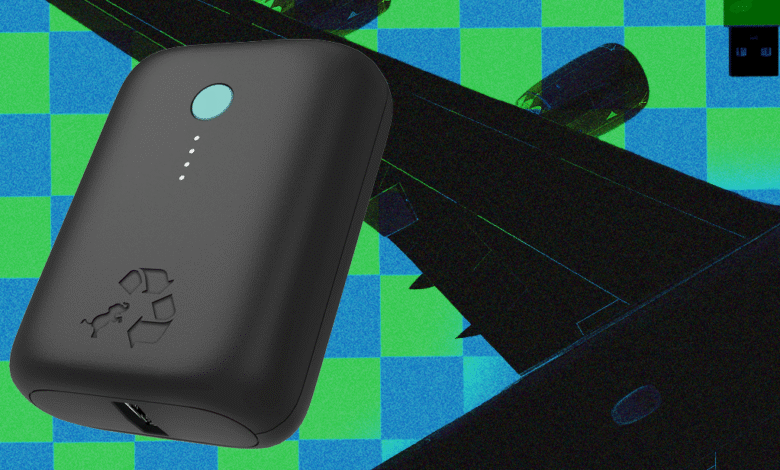Power Bank Flight Rules (2025): What You Need to Know

▼ Summary
– Power banks must be carried in your carry-on luggage and are prohibited in checked baggage.
– The capacity of power banks must not exceed 100 watt-hours (Wh), which is equivalent to 27,000 milliamp-hours (mAh).
– Some airlines allow power banks up to 160 Wh with prior approval, but power banks exceeding 160 Wh are not permitted.
– Individual airlines may have stricter rules, including forbidding the use of power banks onboard or requiring them to be visible during use.
– Power banks must be undamaged, not recalled, and for personal use; spare batteries should be in their original packaging or have exposed terminals taped.
For anyone traveling with electronic devices, understanding the latest power bank flight rules for 2025 is essential for a smooth journey. These portable chargers are lifesavers for keeping phones, tablets, and other gadgets powered up, but airlines worldwide enforce specific regulations to ensure safety in the air. Recent updates from several carriers have introduced stricter guidelines, making it more important than ever to pack and use your power bank correctly.
The two most critical and long-standing regulations are straightforward. First, power banks must always be packed in your carry-on luggage; they are strictly prohibited in checked baggage that goes into the aircraft’s hold. Second, there is a strict limit on capacity. The maximum allowed capacity for a power bank is 100 watt-hours (Wh), which is equivalent to approximately 27,000 milliamp-hours (mAh). You can calculate the watt-hours of your device by multiplying its voltage by its amp-hour rating. While some airlines may permit larger units up to 160 Wh with prior approval, anything exceeding that limit is not allowed on any flight. These rules are standardized by major aviation authorities like the FAA, TSA, and IATA, though individual airlines can impose their own additional restrictions.
When it comes to quantity, the guidelines can vary. The International Air Transport Association (IATA) generally allows passengers to carry up to 20 spare batteries or power banks in their carry-on, provided each unit is under 100 Wh. With special approval from the airline, you may be permitted to bring up to two larger power banks that fall within the 100-160 Wh range. It is always wise to verify the specific policy of the airline you are flying with, as they may have more conservative limits.
Batteries that are installed inside devices, such as a laptop or smartphone, are treated differently. These devices can typically be placed in checked baggage as long as they are completely powered off, not just in sleep or hibernation mode. However, any spare batteries for these devices are subject to the same carry-on rules as power banks. The IATA also notes a limit of 15 personal electronic devices per passenger across both checked and carry-on bags.
Several other important rules, while sometimes less frequently enforced, are worth remembering. Power banks must be for personal use only and show no signs of damage, such as swelling, dents, or cracks. Units that have been officially recalled are not permitted. Spare batteries should be kept in their original retail packaging or placed in a separate protective case. If the terminals are exposed, as with a standalone laptop battery, they should be covered with non-conductive tape.
The rules for actually using a power bank during a flight are where airline policies diverge significantly. There is no universal ban, but due to incidents involving overheating, some carriers have prohibited their use entirely. Others require that the power bank remain in plain sight while charging a device, meaning it cannot be stowed in a seatback pocket or bag. If your power bank begins to feel excessively hot, emits smoke, or shows any swelling, you should stop using it immediately and inform a flight attendant.
A number of airlines have adopted particularly strict policies. For instance, Southwest Airlines mandates that portable chargers be visible at all times during use. Several international carriers, including Cathay Pacific, Emirates, Singapore Airlines, and Thai Airways, have gone a step further by completely forbidding the use of power banks onboard their aircraft. Because regulations can change, always check your airline’s website directly before you travel.
To ensure a hassle-free experience, a little preparation goes a long way. Before packing, inspect your power bank for any physical damage and confirm its capacity is clearly labeled and within the allowed limit. Charge both your power bank and your devices fully before heading to the airport. When packing, keep your power banks in your carry-on bag, ideally in a dedicated pouch. Use airport charging stations to top up your gadgets to reduce the need for in-flight charging. If you do need to use your power bank during the flight, place it on your tray table where you can monitor it for any signs of overheating. For reliable and safe options, well-regarded models include the Nimble Champ and the Anker Laptop Power Bank, while MagSafe power banks are an excellent choice for iPhone users.
(Source: Wired)